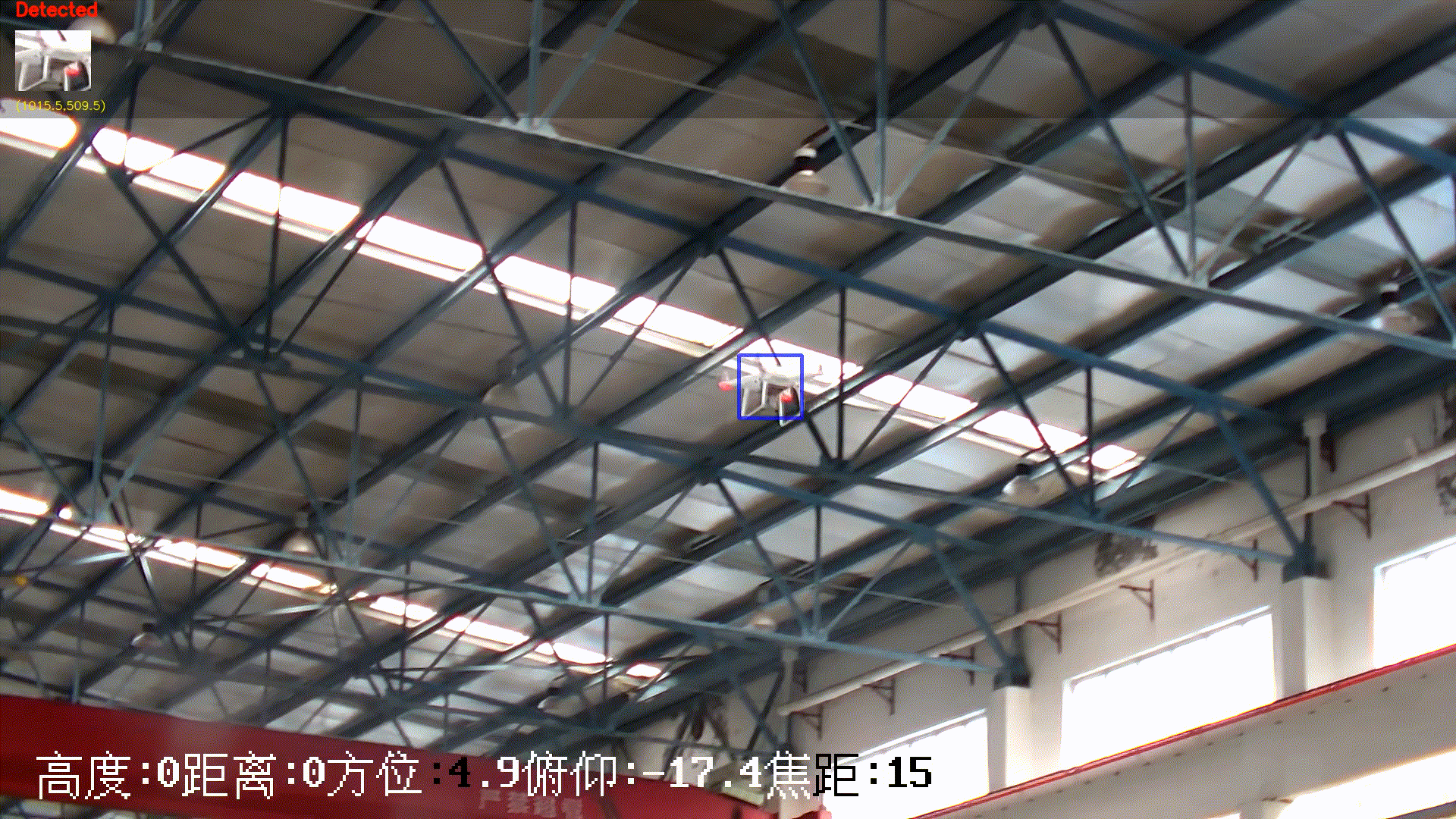- main.py is the main code for demos
- svm_pipeline.py is the UAV detection pipeline with SVM
- visualization.py is the function for adding visalization
- OpenCV3, Python3.5
- OS: Win10
If you want to run the demo, you can simply run:
python main.pysvm_pipeline.py contains the code for the svm pipeline.
Steps:
- Perform a Histogram of Oriented Gradients (HOG) feature extraction on a labeled training set of images and train a classifier Linear SVM classifier.
- A color transform is applied to the image and append binned color features, as well as histograms of color, to HOG feature vector.
- Normalize features.
- Implement a sliding-window technique and use SVM classifier to search for UAV in images.
- Run pipeline on a video stream and create a heat map of recurring detections frame by frame to reject outliers.
The code for this step is contained in the function named extract_features and codes from line 95 to 146 in svm_pipeline.py.
If the SVM classifier exist, load it directly.
Otherwise, I started by reading in all the UAV and non-UAV images.Here is an example of one of each of the UAV and non-UAV classes:

I then explored different color spaces and different skimage.hog() parameters (orientations, pixels_per_cell, and cells_per_block). I grabbed random images from each of the two classes and displayed them to get a feel for what the skimage.hog() output looks like.
To optimize the HoG extraction, I extract the HoG feature for the entire image only once. Then the entire HoG image
is saved for further processing. (see line 327 to 329 in svm_pipeline.py)
I tried various combinations of parameters and choose the final combination as follows
(see line 25-34 in svm_pipeline.py):
YCrCbcolor space- orient = 9 # HOG orientations
- pix_per_cell = 8 # HOG pixels per cell
- cell_per_block = 2 # HOG cells per block, which can handel e.g. shadows
- hog_channel = "ALL" # Can be 0, 1, 2, or "ALL"
- spatial_size = (32, 32) # Spatial binning dimensions
- hist_bins = 32 # Number of histogram bins
- spatial_feat = True # Spatial features on or off
- hist_feat = True # Histogram features on or off
- hog_feat = True # HOG features on or off
All the features are normalized by line 569 to 571 in svm_pipeline.py, which is a critical step. Otherwise, classifier
may have some bias toward to the features with higher weights.
I randomly select 20% of images for testing and others for training, and a linear SVM is used as classifier.
For this SVM-based approach, I use three scales of the search window (96x96 288x288 and 640x640, see line 50).
For every window, the SVM classifier is used to predict whether it contains a UAV nor not. If yes, save this window (see
line 371 to 376 in svm_pipeline.py). In the end, a list of windows contains detected UAVs are obtianed.
After obtained a list of windows which may contain UAVs, a function named generate_heatmap (in line 492 in
svm_pipeline.py) is used to generate a heatmap. Then a threshold is used to filter out the false positives.
For image, we could directly use the result from the filtered heatmap to create a bounding box of the detected UAV.
For video, we could further utilize neighbouring frames to filter out the false positives, as well as to smooth the position of bounding box.
- Accumulate the heatmap for N previous frame.
- Apply weights to N previous frames: smaller weights for older frames.
- I then apply threshold and use
scipy.ndimage.measurements.label()to identify individual blobs in the heatmap. - I then assume each blob corresponded to a UAV and constructe bounding boxes to cover the area of each blob detected.
Obviously, our method does not meet the requirement of real-time due to the fact of sliding window approach is time consuming! We could use image downsampling, multi-threads, or GPU processing to improve the speed. But, there are probably a lot engineering work need to be done to make it running real-time.

